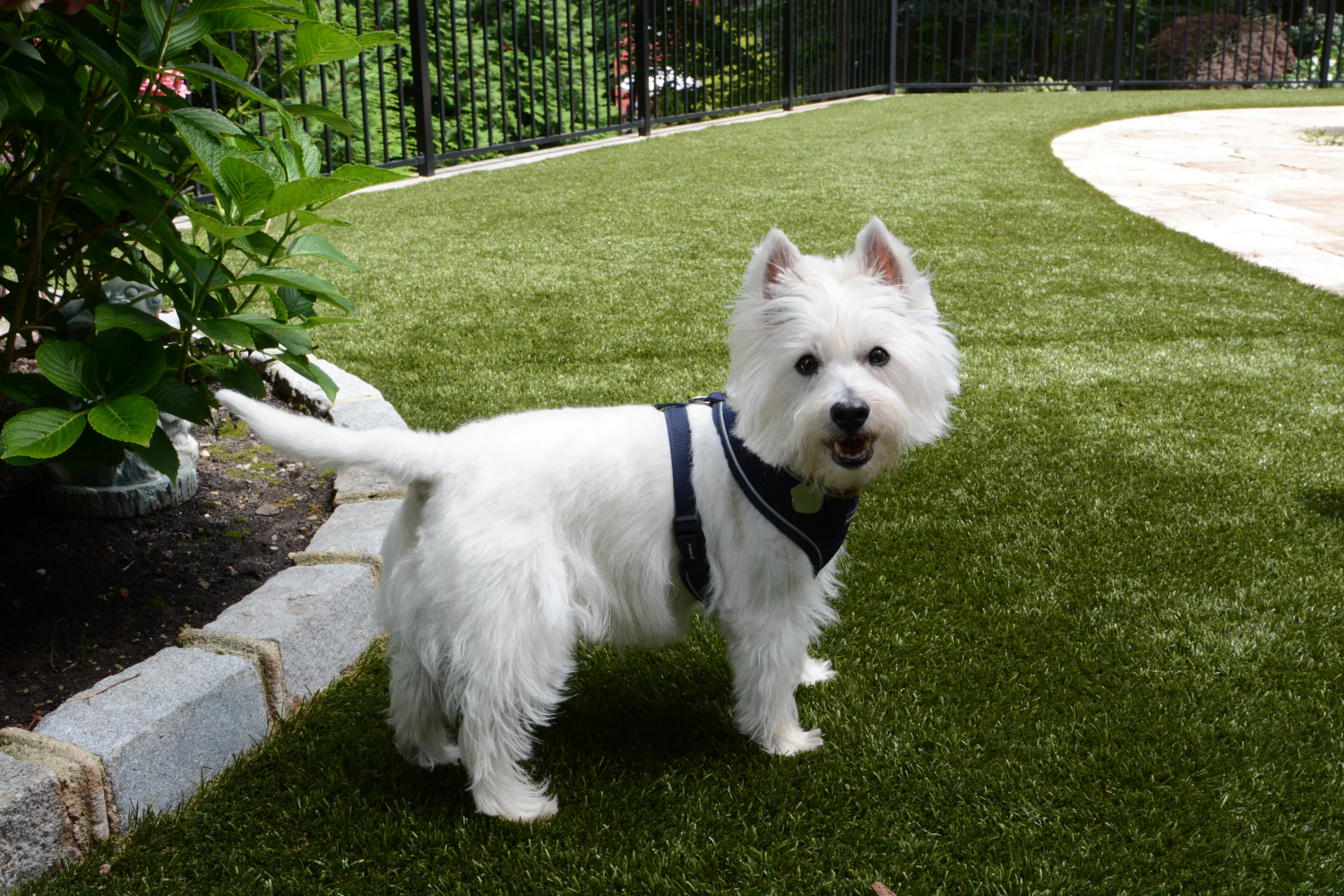How to Avoid Pet Turf Mistakes

You installed artificial grass for the minimal maintenance and clean look — a good choice. But pets make things different. Here’s a fresh take on the top issues that happen to fake grass for dogs and exactly what to do about all of them, the easy way.
1. LEAVING WASTE BEHIND
What happens: A forgotten pile hardens, spreads, or seeps into the infill.
Why it matters: Dried messes can trap bacteria and cause lasting marks.
Fast fix: Pick up and dispose as soon as you can. If traces are left, use a soft brush and a spray with water to lift it out.
Habit to build: Keep a pooper scooper and sealed trash bin near the yard for quick cleanups.
2. CONCENTRATED URINE SPOTS
What happens: Dogs use the same areas and urine builds up.
Why it matters: Lingering stink and discolored infill may follow.
Fast fix: Rinse with a hose every once in a while to prevent buildup, especially if rain is lacking. For stubborn smells, a pet enzyme cleaner made for artificial turf might be necessary when using standard sand infill. Using specialized SWG/Shaw K9 infill stops odor completely.
Preventive move: Shift treat spots or use distractions to spread traffic around.
3. DIGGING, CHEWING, AND NAIL DAMAGE
What happens: Dogs paw at the ground, chew edges, or their nails catch seams.
Why it matters: Tears, loose edges, and pulled fibers wear it out early and create tripping spots.
Fix: Keep claws short and fix raised seams with ground stakes or adhesive recommended by the turf maker.
Prevention: Give dogs a dedicated digging area and provide chew toys.
4. POOR DRAINAGE AND STANDING WATER
What happens: Water pools after storms or heavy use.
Why it matters: Pooled water can encourage mold, fungus, and mildew and create wet play zones.
Fast fix: Remove debris from drainage channels. Lightly lift turf edges near drains to check for blockages.
When to call a pro: If the same spot stays wet repeatedly, the base may need regrading.
5. FLATTENED TURF FIBERS
What happens: Frequently used areas start to look worn and crushed.
Why it matters: Compressed infill keeps dirt in and makes turf harder.
Fast fix: Rake fibers upright with a soft-bristle broom.
Routine: Brush heavily used turf once a month to keep fibers standing tall.
6. USING THE WRONG CLEANING PRODUCTS
What happens: Harsh chemicals damage the backing and fibers.
Why it matters: Discoloration, weakened seams, and early wear.
Fast fix: Hose down spots thoroughly and choose pet and turf friendly products. A natural vinegar and water mix works for many odor issues.
Note: Avoid strong chemicals and hard scrubbers.
QUICK CARE CHECKLIST
- Scoop solids within a few hours
- Wash pee areas at least once a week
- Brush fibers in busy spots monthly
- Keep food and messy treats on a mat
- Use enzyme cleaners labeled safe for synthetic turf
- Inspect drainage after heavy storms
NEED A DEEP PROFESSIONAL CLEANING
Simple routines keep your artificial turf for dogs odor-free and staying neat. If you prefer assistance — from a deep clean to fixing drainage issues or topping up infill — Southwest Greens can do the hard work so your turf remains pet-friendly and guest-ready. Reach out, and we’ll create a care plan for your lawn.
